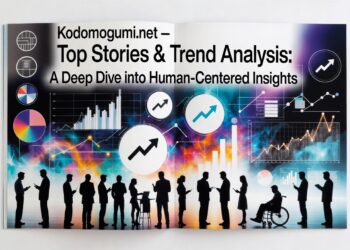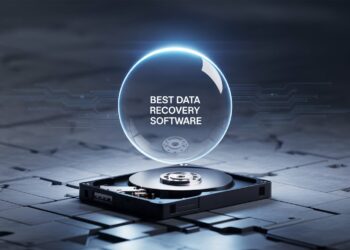Cybersecurity is making technological systems and their associated data impenetrable to malicious actors. It safeguards data from malicious attempts to access, modify, or delete it. Many different types of cybersecurity tools exist. They may all be used to do a privacy audit on all software, identify and eliminate the most recent dangers, and report on the results. Controlling who has access to which files and conducting investigations is made easier with the aid of these cyber technologies.
What Role Does Cybersecurity Play?
Cybersecurity is critical in protecting individuals, organizations, and governments from cyber threats. As more of our lives become digital, and we increasingly rely on technology to store and transmit sensitive information, the risk of cyber attacks continues to grow. Cybersecurity protects digital systems, networks, and sensitive information from unauthorized access, theft, or damage.
Here are some key roles cybersecurity plays:
- Protecting sensitive information: Cybersecurity helps protect sensitive information from unauthorized access and theft. This includes personal information, financial data, intellectual property, and other types of sensitive data.
- Preventing cyber attacks: Cybersecurity measures are put in place to prevent cyber attacks from occurring in the first place. This includes implementing firewalls, intrusion detection systems, and other security tools to identify and block potential threats.
- Minimizing damage from cyber attacks: Even with the best cybersecurity measures, cyber attacks can still occur. Cybersecurity plays a critical role in minimizing the damage caused by cyber-attacks and restoring systems to regular operation as quickly as possible.
- Ensuring compliance with regulations: Many industries are subject to strict cybersecurity regulations, and failure to comply with these regulations can result in fines, legal action, or reputational damage. Cybersecurity helps ensure that organizations stay compliant with relevant regulations and standards.
- Protecting critical infrastructure: Cyber attacks on critical infrastructure, such as power grids or water treatment facilities, can have severe consequences. Cybersecurity plays a critical role in protecting these systems from potential attacks.
Best CyberSecurity Tools
1. SolarWinds Security Event Manager
SolarWinds Security Event Manager (SEM) is a powerful cybersecurity tool that provides real-time threat detection, analysis, and response. SEM is designed to help organizations monitor their networks and IT infrastructure for potential security threats, providing advanced threat intelligence and automated incident response capabilities.
Some key features of SolarWinds SEM include:
- Threat detection: SEM can detect security threats in real-time, using advanced intelligence and behavior analytics to identify potential risks and vulnerabilities.
- Incident response: SEM can automate incident response, allowing security teams to respond quickly to security incidents and minimize the impact of cyber attacks.
- Compliance monitoring: SEM can help organizations comply with industry regulations and best practices by providing real-time monitoring and reporting.
- Log management: SEM can collect, store, and analyze log data from various sources, providing a comprehensive view of network activity and potential security threats.
- Customizable dashboards: SEM provides customizable dashboards and reports, allowing security teams to easily track key performance metrics and identify potential areas of concern.
- Threat intelligence: SEM integrates with various intelligence feeds, providing up-to-date information on emerging threats and vulnerabilities.
2. TotalAV
TotalAV is a cybersecurity software that provides a comprehensive suite of tools to protect computer systems and sensitive data from cyber threats. TotalAV offers a wide range of features, including antivirus, anti-malware, and anti-spyware protection, as well as advanced firewall protection, ransomware protection, and system optimization tools.
Here are some of the key features of TotalAV:
- Antivirus protection: TotalAV includes advanced antivirus protection that can detect and remove viruses, malware, and other types of threats in real-time.
- Anti-malware protection: TotalAV also includes anti-malware protection, which helps protect against malicious software that can be used to steal personal information or cause damage to computer systems.
- Firewall protection: TotalAV includes a firewall that helps prevent unauthorized access to computer systems and networks.
- Ransomware protection: TotalAV includes advanced ransomware protection that can detect and block ransomware attacks, preventing cybercriminals from encrypting sensitive data and demanding payment for its release.
- System optimization: TotalAV includes system optimization tools that can help improve system performance, speed up computer startup times, and free up disk space.
- Safe browsing: TotalAV includes safe browsing features that help protect against phishing attacks and other online scams.
3. Log360
Log360 is a cybersecurity software that provides a comprehensive suite of tools for security information and event management (SIEM), log management, and advanced threat detection. It is designed to help organizations detect and respond to cyber threats in real time and meet compliance requirements.
Here are some of the key features of Log360:
- SIEM: Log360 includes SIEM capabilities, allowing organizations to collect and analyze real-time security event data from multiple sources. This enables organizations to detect and respond to potential threats more quickly.
- Log management: Log360 includes log management capabilities that allow organizations to collect, store, and analyze log data from various sources, including servers, network devices, and applications. This helps organizations identify potential security issues and comply with regulations.
- Threat detection: Log360 includes advanced threat detection capabilities, such as behavior analysis and anomaly detection, to identify potential threats and attacks.
- User activity monitoring: Log360 provides user activity monitoring capabilities that enable organizations to monitor and analyze user behavior to detect potential insider threats.
- Compliance reporting: Log360 includes compliance reporting capabilities, allowing organizations to generate reports for various regulations, such as PCI-DSS, HIPAA, and GDPR.
- IT automation: Log360 includes IT automation capabilities, enabling organizations to automate repetitive tasks and streamline security processes.
4. SecPod SanerNow
SecPod SanerNow is a cybersecurity software that provides comprehensive tools for vulnerability management, patch management, compliance management, and endpoint security. It is designed to help organizations detect and remediate security vulnerabilities and non-compliant endpoints in real time.
Here are some of the key features of SecPod SanerNow:
- Vulnerability management: SecPod SanerNow includes vulnerability management capabilities that allow organizations to scan and detect security vulnerabilities across their IT infrastructure, prioritize them based on severity, and remediate them in real time.
- Patch management: SecPod SanerNow includes patch management capabilities that enable organizations to deploy patches across their endpoints promptly and efficiently, reducing the risk of cyber attacks.
- Compliance management: SecPod SanerNow includes compliance management capabilities that help organizations ensure their endpoints comply with industry standards and regulations such as HIPAA, PCI-DSS, and GDPR.
- Endpoint security: SecPod SanerNow includes endpoint security capabilities that enable organizations to detect and remediate security threats on their endpoints, including malware, ransomware, and other types of cyber attacks.
- Automated remediation: SecPod SanerNow includes automated remediation capabilities that allow organizations to automatically remediate vulnerabilities and non-compliant endpoints, reducing the workload on IT teams.
- Customizable reports: SecPod SanerNow includes customizable reporting capabilities, enabling organizations to generate reports on vulnerabilities, patches, compliance, and other security-related data.
5. LifeLock
LifeLock is a cybersecurity software that provides individuals and families with identity theft protection and credit monitoring services. It is designed to help protect personal information, such as Social Security numbers, credit card information, and bank account details, from cyber criminals who may use it for fraudulent activities.
Here are some of the key features of LifeLock:
- Identity theft protection: LifeLock monitors personal information, such as Social Security numbers, credit card numbers, and bank account details, to detect potential identity theft. If suspicious activity is detected, LifeLock alerts the individual and takes steps to help resolve the issue.
- Credit monitoring: LifeLock monitors credit reports and alerts individuals to any changes, such as new credit accounts or loans, that may indicate fraudulent activity.
- Dark web monitoring: LifeLock scans the dark web for personal information for sale, alerting individuals if their information is found.
- Lost wallet protection: LifeLock assists in canceling and replacing lost or stolen credit cards, driver’s licenses, and other essential documents.
- Stolen funds reimbursement: LifeLock offers up to $1 million in stolen funds reimbursement if an individual’s identity is stolen while they are a LifeLock member.
- Mobile app: LifeLock offers a mobile app that allows individuals to monitor their personal information and receive alerts on the go.
6. Acunetix
Acunetix is a cybersecurity software that provides comprehensive tools for web application security testing and vulnerability scanning. It is designed to help organizations identify and remediate vulnerabilities in their web applications, reducing the risk of cyber attacks.
Here are some of the key features of Acunetix:
- Web application scanning: Acunetix includes web application scanning capabilities that enable organizations to identify vulnerabilities in their web applications, including SQL injection, cross-site scripting (XSS), and other security vulnerabilities.
- Network scanning: Acunetix includes network scanning capabilities that allow organizations to scan their network infrastructure for vulnerabilities, including open ports, weak passwords, and other security issues.
- API testing: Acunetix includes API testing capabilities that enable organizations to test the security of their APIs, including REST APIs, SOAP APIs, and other types of APIs.
- Vulnerability management: Acunetix includes vulnerability management capabilities that allow organizations to prioritize and remediate vulnerabilities based on severity and impact.
- Compliance reporting: Acunetix includes capabilities that enable organizations to generate reports for various regulations, such as PCI-DSS, HIPAA, and GDPR.
- Integration with other tools: Acunetix integrates with other cybersecurity tools, such as SIEMs and WAFs, to provide a more comprehensive security solution.
7. Intruder
The intruder is a cloud-based cybersecurity software that provides comprehensive tools for vulnerability scanning and management. It is designed to help organizations detect and remediate security vulnerabilities in their IT infrastructure, reducing the risk of cyber attacks.
Here are some of the key features of Intruder:
- Vulnerability scanning: Intruder includes vulnerability scanning capabilities that allow organizations to scan their IT infrastructure for security vulnerabilities, including web application vulnerabilities, network vulnerabilities, and operating system vulnerabilities.
- Real-time alerts: Intruder provides real-time alerts for newly discovered vulnerabilities, enabling organizations to remediate them promptly.
- Prioritization of vulnerabilities: Intruder prioritizes vulnerabilities based on their severity and provides recommendations on how to remediate them.
- Automated scans: Intruder includes automated scanning capabilities that enable organizations to schedule scans and receive regular reports on their IT infrastructure’s security posture.
- Integration with other tools: Intruder integrates with other cybersecurity tools, such as SIEMs and ticketing systems, to provide a more comprehensive security solution.
- Compliance reporting: Intruder includes capabilities that enable organizations to generate reports for various regulations, such as PCI-DSS, HIPAA, and GDPR.
8. DeleteMe
DeleteMe is a cybersecurity software that provides online privacy protection services to individuals and families. It is designed to help people remove personal information from the internet and prevent it from being shared or sold to third parties, reducing the risk of identity theft and other cyber attacks.
Here are some of the key features of DeleteMe:
- Personal information removal: DeleteMe provides a team of privacy experts who work to remove personal information, such as name, address, phone number, and email address, from various online databases and directories.
- Data broker removal: DeleteMe works to remove personal information from data broker websites that collect and sell personal information to third parties.
- Monitoring: DeleteMe provides monitoring services that alert individuals when their personal information is found online, enabling them to take action to remove it.
- Privacy Report: DeleteMe provides a privacy report that identifies areas where personal information is exposed online and provides recommendations for improving online privacy.
- Customer support: DeleteMe provides customer support to help individuals with questions or concerns about online privacy and removing personal information.
9. Perimeter 81
Perimeter 81 is a cloud-based cybersecurity software that provides secure remote access and network security solutions for businesses of all sizes. It is designed to help organizations protect their digital assets from cyber threats and secure their remote workforce.
Here are some of the key features of Perimeter 81:
- Secure remote access: Perimeter 81 provides secure remote access solutions that allow employees to connect to their corporate network and resources from any location while ensuring that the connection is encrypted and secure.
- Network security: Perimeter 81 includes capabilities that protect the organization’s network and resources from cyber threats, such as malware, phishing, and ransomware attacks.
- Zero Trust Security: Perimeter 81 adopts a Zero Trust security model that assumes all connections are untrusted and verifies each user and device before allowing access to corporate resources.
- Multi-factor authentication: Perimeter 81 supports multi-factor authentication to ensure only authorized users can access the organization’s network and resources.
- User and device management: Perimeter 81 includes user and device management capabilities that allow organizations to control and manage access to their network and resources based on user and device attributes.
- Integration with other tools: Perimeter 81 integrates with other cybersecurity tools, such as SIEMs and firewalls, to provide a more comprehensive security solution.
10. Vipre
Vipre is a cybersecurity software that provides endpoint security solutions for businesses of all sizes. It is designed to help organizations protect their endpoints, such as laptops, desktops, and servers, from various cyber threats, including viruses, malware, and ransomware.
Here are some of the key features of Vipre:
- Endpoint protection: Vipre provides endpoint protection capabilities that protect endpoints from viruses, malware, ransomware, and other cyber threats.
- Advanced threat protection: Vipre includes advanced threat protection capabilities that use behavioral analysis and machine learning to detect and prevent emerging threats in real time.
- Email security: Vipre provides capabilities that protect organizations from email-borne threats, such as phishing, spam, and malware.
- Web security: Vipre includes security capabilities that block malicious websites and prevent users from accessing risky or inappropriate content.
- Patch management: Vipre provides patch management capabilities that automate the patching process for various software and operating systems, reducing the risk of vulnerabilities and cyber attacks.
- Centralized management: Vipre includes a centralized management console that allows administrators to manage and monitor endpoint security from a single location.
11. Cyber Protect
Cyber Protect is a cybersecurity software that provides various cybersecurity solutions for businesses, including endpoint protection, network security, email security, and data backup and recovery. It is designed to help organizations protect their digital assets from cyber threats, such as viruses, malware, phishing, and ransomware.
Here are some of the key features of Cyber Protect:
- Endpoint protection: Cyber Protect provides endpoint protection capabilities that protect endpoints from viruses, malware, and other cyber threats.
- Network security: Cyber Protect includes network security capabilities that protect the organization’s network and resources from cyber threats, such as malware, phishing, and ransomware attacks.
- Email security: Cyber Protect provides email security capabilities that protect organizations from email-borne threats, such as phishing, spam, and malware.
- Data backup and recovery: Cyber Protect includes data backup and recovery capabilities that enable organizations to back up their critical data and recover it in case of a data loss event, such as a ransomware attack.
- Multi-factor authentication: Cyber Protect supports multi-factor authentication to ensure only authorized users can access the organization’s network and resources.
- Centralized management: Cyber Protect includes a centralized management console that allows administrators to manage and monitor endpoint security from a single location.
12. Malwarebytes
Malwarebytes is a cybersecurity software that provides endpoint protection solutions for businesses of all sizes. It is designed to help organizations protect their endpoints, such as laptops, desktops, and servers, from various cyber threats, including viruses, malware, and ransomware.
Here are some of the key features of Malwarebytes:
- Endpoint protection: Malwarebytes provides endpoint protection capabilities that protect endpoints from viruses, malware, ransomware, and other cyber threats.
- Behavioral analysis: Malwarebytes uses behavioral analysis to detect and block threats in real-time, including those that may not have been detected by traditional antivirus software.
- Centralized management: Malwarebytes includes a centralized management console that allows administrators to manage and monitor endpoint security from a single location.
- Remediation: Malwarebytes provides remediation capabilities that enable organizations to remove threats from infected endpoints quickly.
- Multi-vector protection: Malwarebytes provides multi-vector protection that covers multiple attack vectors, including web, email, and network.
- Integration with other tools: Malwarebytes integrates with other cybersecurity tools, such as SIEMs and firewalls, to provide a more comprehensive security solution.





